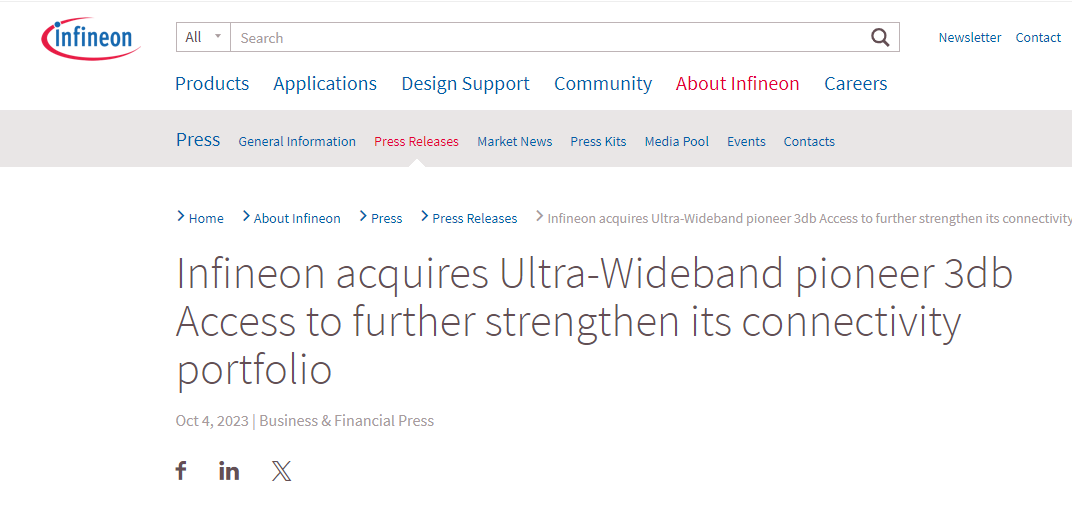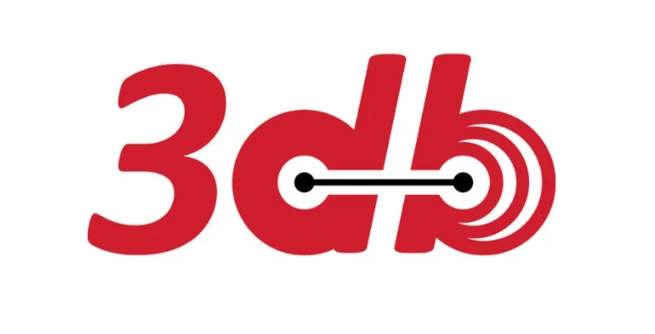Infineon has acquired another chip company!
After acquiring a gallium nitride manufacturer in March, Infineon acquired another chip company.On October 4th, Infineon announced that it had acquired Zurich based startup 3dB Access AG (3dB), a pioneer in secure low-power ultra wideband (UWB) technology and has become the preferred intellectual property provider for major automotive brands. Infineon will acquire 100% of the company's shares. Both parties have agreed not to disclose the transaction amount.

It is reported that 3dB Access AG is a fabless semiconductor company focused on secure ultra wideband (UWB) low-power chips, headquartered in Switzerland. 3dB Access pursues centimeter level, low-power, and secure UWB positioning technology, providing accurate and secure UWB positioning solutions through flexible cooperative modes to access applications such as vehicles, buildings, tracking tags, IoT devices, and mobile payments.
The products of 3dB Access are divided into three categories: LRP UWB (low rate pulse), HRP UWB (high rate pulse), and HRP/LRP (IEEE 802.15.4z). Among them, chips with low rate pulses can be applied to low-power IoT devices, such as smartwatches, wearable devices, sensors, etc.

This acquisition further strengthens Infineon's product portfolio in the fields of secure intelligent access, precise positioning, and enhanced perception. Infineon is now adding UWB to its connectivity solutions, including Wi Fi and Bluetooth ®/ Bluetooth ® Low power and NFC solutions. The first batch of IoT use cases include secure access and authentication, precise location tracking and indoor navigation, and presence detection implemented using UWB radar.
Thomas Rosteck, President of Connected Secure Systems at Infineon, stated: 3dB's expertise in ultra wideband technology has accelerated Infineon's roadmap in the field of IoT to leverage market opportunities for secure connectivity devices. Our comprehensive strength has enabled UWB to expand to additional automotive, industrial, and consumer IoT applications, becoming the next logical step. Now, we will create complete system solutions with unique features that combine low-power, enhanced IoT applications Manage layer security, feature rich RF front-end configuration, and optimize positioning hardware architecture
Boris Danev, co-founder and CEO of 3dB Access AG, stated: As smartphone manufacturers add UWB capabilities to their latest and future generations of products, the demand for UWB capable devices is expected to significantly increase. Our mission is to open up the best applications of this technology to smartphones, cars, and achieve independent integration in low-power IoT devices. As part of Infineon, we will strive to provide rich positioning and perception capabilities for major IoT and automotive applications. We now We are transitioning from an intellectual property provider to an expert team selling solutions from our own factories
UWB is a wireless communication technology that uses a frequency bandwidth of over 500MHz and uses nanosecond non sinusoidal narrow pulses for data transmission. UWB has the characteristics of low system complexity, insensitivity to channel fading, and strong penetration ability. In recent years, it has attracted attention in applications such as high-precision positioning and radar.
The UWB transceiver system consists of two parts: RF and baseband, and the industry usually uses two chips to achieve RF and baseband functions respectively. With the application of UWB technology in fields such as smartphones and automotive digital keys, SoC solutions that integrate functions such as RF, baseband, MCU, and subsystems such as BLE (Bluetooth) have become more competitive in terms of cost, performance, and system application convenience, becoming the main research and development direction for UWB chip design enterprises.
According to ABI research, the UWB chip market is expected to grow at an average annual rate of 13% by 2028, reaching approximately $31 billion.

